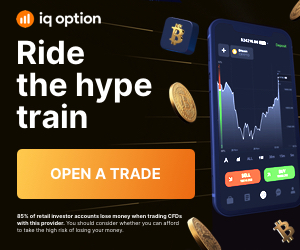1 / 4 of a century in the past, American markets skilled the peak of what was referred to as the “Web bubble,” when capital rushed towards rising expertise firms motivated by the dream of digital transformation. In March 2000, the bubble burst, and the S&P 500 index collapsed by practically 50%. After greater than 20 years, the scene returns in a brand new guise: the index itself achieves historic peaks, however its positive aspects at the moment are restricted to a restricted variety of firms. Large, which raises the query: Are we residing in a brand new bubble led by synthetic intelligence as an alternative of the Web?
53 years previous
Ned Davis Analysis analysts confirmed that the power of the Massive Seven shares is obvious within the excessive market focus, as the ten largest shares exceeded 40% of the market worth of the S&P 500 index, which is the primary time this has occurred since a minimum of 1972, which implies that the efficiency of your complete index has turn out to be excessively depending on these ten firms, which will increase the chance of fluctuation within the funding portfolio.
Rising star
The dominance of those main firms is obvious when wanting on the S&P 500 fund’s portfolio, the place the 11 largest shares (Alphabet has two courses of shares within the index) represent 40.3% of the fund’s whole portfolio, which has belongings of $683 billion. This unequal distribution truly reduces the diversification profit that investing in 500 firms is meant to offer.
|
Heaviest weighted firms within the S&P 500 Index (knowledge for October 2025)
|
|||
|
Firm
|
Relative weight within the index
|
Compound annual progress charge of income over two years by 2024
|
Future P/E a number of
|
|
NVIDIA
|
%8.0
|
%113
|
32.3
|
|
Microsoft
|
%6.7
|
%13.3
|
31.8
|
|
Apple
|
%6.7
|
%1.1
|
32.1
|
|
Amazon
|
%3.7
|
%11.4
|
29.7
|
|
Broadcom
|
%2.8
|
%25.5
|
37.2
|
|
lifeless
|
%2.7
|
%18.8
|
24.0
|
|
Alphabet
(Class A)
|
%2.5
|
%11.6
|
23.3
|
|
Tesla
|
%2.1
|
%9.5
|
185.4
|
|
Alphabet
(Class C)
|
%2.0
|
%11.6
|
23.4
|
|
Berkshire Hathaway
|
%1.6
|
%10.9
|
23.4
|
|
JP Morgan
|
%1.5
|
%33.7
|
15.0
|
Highly effective efficiency
Regardless of the dangers of focus, it can’t be denied that the dominance of those firms is supported by sturdy gross sales progress, as FactSet knowledge exhibits that the compound annual progress charges for the revenues of the ten firms with the heaviest weight within the index far exceeded the weighted charge of the index as a complete (3.7% over two years), except for Apple.
Valuation dangers
The ahead price-to-earnings ratio for the S&P 500 index is presently 23 instances, which is its highest degree since early 2021. This ratio is calculated by dividing the closing worth by the agreed-upon earnings estimates for the inventory over the following 12 months. The rise on this evaluation signifies that traders are paying a excessive worth for each greenback of anticipated earnings, which reduces the investor’s margin of security if these should not achieved. Expectations.
Historic context
– The index has not traded at a valuation considerably increased than its present valuation since March 2000, a 12 months by which the ahead price-to-earnings ratio peaked at 26.2 instances, simply earlier than the dot-com bubble deflated, which implies it’s approaching the harmful valuation zone that preceded the historic collapse, and raises the opportunity of a serious market correction, particularly since present earnings expectations could also be overly optimistic.
Focus variation
Essentially the most worrying factor within the historic comparability is that the present degree of focus is far increased than it was earlier than the dot-com bubble burst. On March 24, 2000, earlier than the market collapse, the index’s focus in its 10 largest constituent firms was solely 29.2%. This discrepancy signifies that the talked about twin dangers might symbolize higher cumulative stress on the index’s efficiency than was the case 20 years in the past.
Web bubble
– After the S&P 500 index reached its peak in March 2000, it fell by 49.1% till October 2002, and even when traders reinvested all of the dividends, the whole return would nonetheless be destructive at 47.4%, which summarizes the scale of the massive losses that traders normally incur when monetary bubbles burst, fueled by overvaluation and insecure focus of shares.
Danger distribution
The sturdy rise within the S&P 500 index over the previous two years is because of excessive progress expectations for main expertise firms, not precise earnings. Concern will increase because the hole between valuations and operational fundamentals widens, particularly in gentle of the large wave of spending on synthetic intelligence and digital infrastructure. Due to this fact, specialists suggest lowering reliance on funds weighted by market worth. The pattern is in direction of alternate options comparable to equal-weighted funds or funds with a worth focus to distribute dangers extra evenly.
A necessity, not a luxurious
Though investing within the American index has confirmed its effectiveness traditionally, professional Mark Hulbert confirms {that a} balanced technique (a portfolio of 60% shares and 40% bonds) typically outperforms the index in intervals of overvaluation, which highlights the significance of funding distribution in keeping with the present financial cycle.
Sources: Figures – Market Watch – Monetary Occasions






